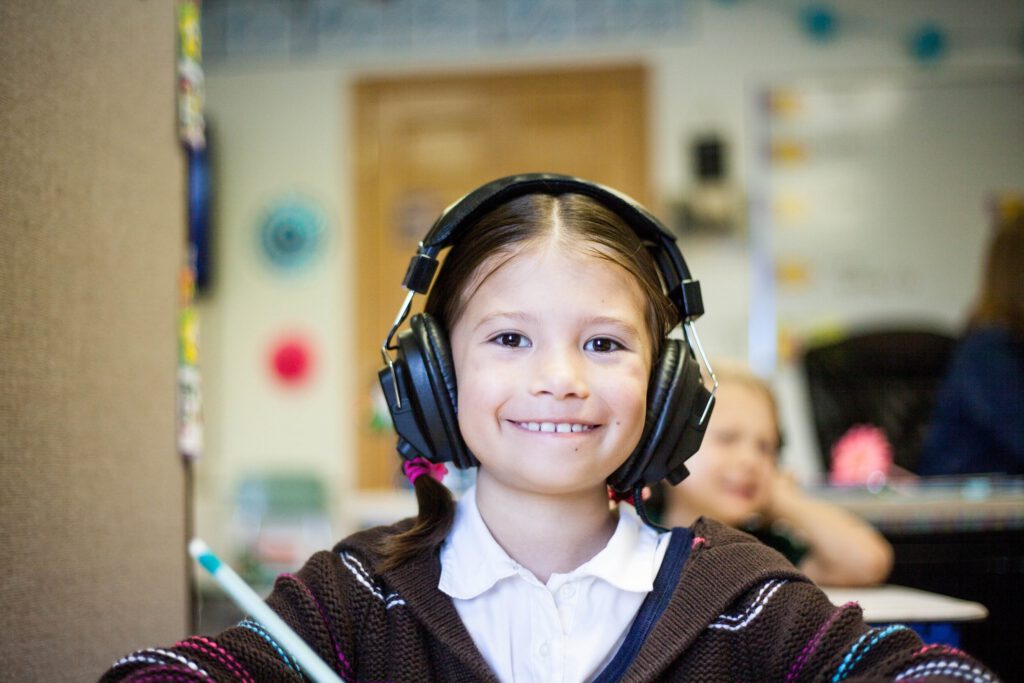Learning Languages Online
Second-language acquisition in hybrid classrooms through curiosity, community, and communication technology
People who want to learn a second, third, or even fourth language are able to do so largely through personal motivation and self-determination. Research shows that motivation plays a critical role in second-language acquisition regardless of age, ability, or access to resources. During the COVID-19 pandemic, primary and secondary language teachers found themselves in a new landscape of learning that I have worked in as a Spanish teacher for years: the virtual classroom. I teach small classes of adolescent and adult learners in an online environment in my virtual language program, The Community Spanish Program. Students ranging in age from 15 to 75 have enrolled in my classes with a personal interest in learning Spanish. The years I have spent developing responsive curricula and crafting an online space for learning Spanish have highlighted a number of best practices in virtual second-language acquisition. In order to facilitate world-language instruction for literate learners in the virtual classroom, teachers must assume a new role defined largely by the efforts they make to build community and personalize learning. The following three best practices in online world-language instruction will help usher in meaningful engagement and high achievement in the 2021-22 school year.
Lean into student interest and passion.
Highly effective language teachers ascertain students’ language proficiency at the start of the school year; in addition, teachers in hybrid learning environments must spend time determining the key motivational factors and passions that drive student interest. Teachers make use of pre-assessments and diagnostic tools to measure how well students communicate in the interpersonal, presentational, and interpretive domains of language along with their understanding of core grammatical concepts and vocabulary. Do teachers place as much emphasis on understanding the personal interests that students bring to the classroom? Personal interest inventories and student surveys are powerful tools in the world-language classroom for two reasons:
-
Teachers use student interest data to create engaging learning activities on themes and communication skills relevant to their students.
-
Students tap into their own personal interests to develop intrinsic motivation as they do the hard work of acquiring a second language.
As teachers prepare for the upcoming school year where learning may take place in physical classrooms, virtual environments, or some combination of the two, they have a unique opportunity to reevaluate their routines to start the school year. Consider creating metacognitive language-learning opportunities for students to contemplate the reason for which they are enrolled in Spanish, Arabic, Chinese, Portuguese, Filipino, etc. Allow students to use prior knowledge of the language to communicate about their passions and interests! Then take that data and translate it into responsive lesson planning and curriculum design.
Build community to create accountability.
The COVID-19 pandemic created an attendance crisis during the forced transition to online learning experienced by students and teachers across the globe. Teachers wrung their hands as they anxiously awaited students in Zoom Meetings and Google Hangouts where large percentages of students were absent. Platform assignments were left unopened or incomplete far too often. At Moreland University—home of the revolutionary online teacher-preparation program TEACH-NOW that leads to teacher certification—we had more than 5,000 enrollments in our no-cost and low-cost professional development from March of 2020 through our most recent conference in June of 2021. Teachers sought out tools, resources, and techniques to increase student engagement and participation in the virtual classroom. What we have learned from hundreds of teachers’ input in our teacher-led professional development is that community counts: Teachers must work with students to build a sense of belonging within the classroom, while creating multiple networks of communication to facilitate outreach and community.
Connecting back briefly to my experience teaching Spanish virtually to adult learners in an online program, I can confidently share that community kept classes alive. As interesting as my lessons and as engaging and personalized as my activities might have been, students eventually grew tired of slogging through the trials and tribulations of learning Spanish. What kept them on track for success were the folks with whom they enrolled. The community of language learners we developed was a continual lever of accountability for students as they came to count on one another for support, encouragement, and collaboration.
Teachers in the 2021-22 school year must not underestimate the power of a strong community of learners and classroom culture of achievement as they strive to support students’ second language acquisition. Teachers can create community by promoting student agency in collaborative learning tasks that are cooperative in nature: Each student plays a unique role in the accomplishment of the overall goal of the assigned task. In this way, students are held accountable to their small groups as they learn the target language. Moreover, mindfulness practices and a focus on Social and Emotional Learning create a learning environment wherein students can bring themselves fully and wholly to the classroom, sharing their struggles and celebrating their triumphs. Teachers build community by creating learning spaces where student voice leads the conversation and directs the learning process while providing guidance, support, and encouragement on the side.
Cautiously embrace language technology.
Artificial intelligence and other advanced technological tools have made it possible for simultaneous translation within the context of both spoken and written language. Smartphone applications have made way for self-sustaining learning platforms without the necessity of a teacher. Even video streaming services, including Youtube and Vimeo, now provide tailor-made lessons on any grammatical construct a student might need. Students have access to these tools both in the physical classroom and in the virtual learning environment. The following are two implications on learning a world language which might shape the 2021-22 school year.
First, students should be empowered to use the app, tool, or website that best serves them for individual learning and support outside of regular classroom activities. As curators of resources, teachers can provide a comprehensive list of language-learning technologies from which students should be encouraged to select based on interest and preference. Check out these tools and resources available in multiple languages:
Second, teachers must create authentic communicative tasks on global themes that move beyond grammatical exercises, vocabulary worksheets, and textbook activities. Grounded in real-world communication on interdisciplinary topics, these activities provide students with opportunities to exercise the skills they will need outside of the classroom as they strive to use the language in their communities and the world at large. Most importantly, these activities engage students’ creativity and self-expression in ways that draw them into the learning activities and personally invest them in developing their communicative abilities. Language technologies enable students to create authentic messages of personal importance, while assisting students as they seek to understand the target language as it is used in natural ways. Below are some examples of interdisciplinary activities grounded in authentic communication:
Every classroom context is unique and requires teachers to be resourceful problem solvers and tech-savvy educators in response to the individual learning needs present in their classrooms, both virtual and in-person. By leaning into student interest, creating a community of accountability, and cautiously embracing language-learning technology, teachers can take full advantage of the benefits of hybrid learning that the 2021-22 school year brings. To learn more about the professional development offered by Moreland University as you prepare for hybrid learning this fall, click the link below.
Joseph A. Pearson, MS.Ed.



